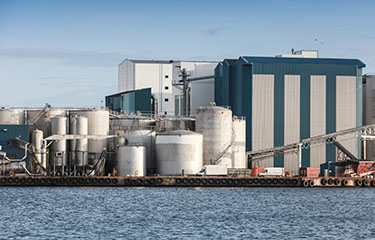Late anchoveta season in Peru driving major fishmeal production increase

Global fishmeal production was up 55 percent in the first two months of 2023 compared to the same period of 2022, according to IFFO, the international trade body that represents the marine ingredients industry.
A late start to the second anchoveta-fishing season in the north-central area of Peru resulted in more raw material being available to fishmeal producers in early part of 2023, IFFO said. Peru’s second fishing season closed 5 February with 84 percent of the 2.283-million-metric-ton quota landed.
“But most regions have started the year with an improved availability of raw material,” it said.
Producers used around 15 percent more raw material in fishmeal production in February 2023 year-over-year, a sign there was more raw material available. IFFO said there had been improved catches in reduction fisheries in most areas, except for Spain, Iceland, and the North Atlantic. IFFO draws on data provided by its members, which collectively represent around 50 percent of fishmeal and fish oil production globally.
In Peru, the fishmeal industry is awaiting a scientific evaluation of the anchoveta biomass being conducted by the Peruvian Institute for Marine Studies (IMARPE). An official announcement of the quota and start date for Peru’s next anchoveta-fishing season is expected soon, IFFO said.
In contrast to the situation with fishmeal, global fish oil production was down 20 percent in 2023 through February, mainly driven by a decline in production in Iceland and the North Atlantic region, according to IFFO.
In China, the world’s top consumer of fishmeal, marine ingredients and aquafeed production remains subdued in advance of the reimposition of the country’s annual domestic fishing ban on 1 May.
“Aquafeed production in the first months of 2023 has remained subdued, partly because of the seasonal activity slowdown in both the aquaculture and pig-farming sector, partly because of the Covid wave that hit the country and the long holidays breaks,” IFFO said. “Aquafarming activities have so far remained confined to some areas of Guangdong, Guangxi, and Hainan provinces. It is expected that the sector will reactivate when temperatures rise in April-May.”
China’s pig-farming industry is still dealing with oversupply and African swine fever, denting demand for fishmeal, the organization said.
IFFO noted byproducts from processed fish destined to direct human consumption by Chinese consumers “are getting more important as a source of raw material for reduction, together with imports of marine ingredients.”
Photo courtesy of Evannovostro/Shutterstock






Share